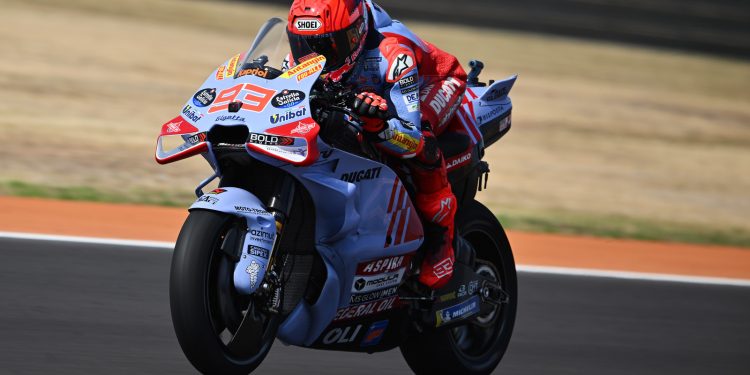
Marc Márquez and the Phases of Adapting to Ducati: ‘There Comes a Point Where You Can’t Adapt Anymore and Have to Explore Technically’…
Marc Márquez, a name synonymous with dominance in the MotoGP world, has been in the spotlight for his remarkable ability to adapt to various challenges throughout his illustrious career. As he begins exploring options outside his long-standing relationship with Honda, the conversation surrounding his potential move to Ducati has become more than just speculation. Márquez, who has experienced both triumph and adversity with Honda, has now set his sights on Ducati, a manufacturer that has been at the forefront of MotoGP success in recent years.
The transition to a new bike and team is one of the most complex challenges for any MotoGP rider. It requires a deep understanding of the machine’s behavior, the tire management, electronics, and the overall team dynamics. Márquez, known for his fearless riding style, acknowledges that adapting to a new bike is a multi-phase process, one that can only go so far before the rider must think beyond just physical adaptation.
For the six-time MotoGP World Champion, the initial phase of adapting to a new bike is always focused on finding the right feel. “You begin by understanding the bike’s characteristics and limitations, trying to get a feel for its power delivery, chassis stability, and handling,” said Márquez in a recent interview. In this phase, the rider’s primary goal is to get accustomed to the bike’s base setup and discover how best to use it on track. However, for a rider of Márquez’s caliber, this phase is usually short. He’s known for quickly mastering the fundamental aspects of a motorcycle, a testament to his exceptional talent and understanding of bike dynamics.

The second phase, according to Márquez, involves pushing the limits of the bike’s setup and fine-tuning it. “Once you know how the bike behaves in different conditions, you start modifying the setup to make it more suited to your style,” he explained. This is where the real adaptation happens. Riders begin to adjust various elements of the bike, such as suspension, gearing, and weight distribution, to get closer to their ideal riding position. It is a delicate balance because while the bike might be fast, a rider needs to be able to control it in all situations, whether during a qualifying lap or in race conditions. The more this phase progresses, the more the rider develops a unique relationship with the bike, aligning it with his strengths and preferences.
However, as Márquez alludes to, there comes a point where this technical adaptation hits a ceiling. “There comes a point where you can’t adapt anymore, and you have to start exploring technically,” he said. This statement highlights an important realization for elite riders: beyond a certain point, it’s not about tweaking the setup or riding style anymore. Instead, the focus shifts to understanding the deeper engineering aspects of the bike, pushing the boundaries of its potential through technical innovations and changes. This is where collaboration with engineers becomes crucial. The rider must work alongside the technical team to explore new avenues for improvement that might involve changes to the bike’s design, aerodynamics, or electronics.
For Márquez, Ducati represents a new frontier in this sense. Ducati has been the most consistent team in recent seasons, with their Desmosedici GP bike continually improving, providing a platform that has allowed riders like Francesco Bagnaia to thrive. However, the Ducati is known for being tricky to handle, especially for riders who are use to.
Leave a Reply